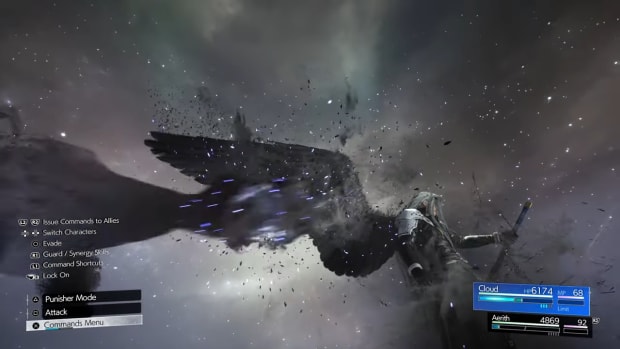
EA Sports PGA Tour is a labor of love, painstaking detail work, and cool tech

EA Sports PGA Tour is a beautiful love letter to the golf sport and could be a step towards the future of sports games with its innovative integration of real-life data into its live-service aspect. Naturally, this video game wasn’t made overnight – EA Sports PGA Tour may end an eight-year hiatus of golf game releases from the publisher, but the developers started their comeback a whole lot earlier than that. EA Sports PGA Tour has been in the oven for four years at this point.
I recently had the opportunity to talk to gameplay designer Craig Penner and producer Ben Ramsour about their project and all the work that went into it amid global turmoil.
“We had to get a little bit creative during the pandemic, but fortunately we were able to get into the COVID bubble to scan our players at one of the events, and we got special permission when EA wasn’t really traveling a whole lot to go to certain courses to scan them,” Ramsour tells me.
Doing their own scanning work at some of the 30 courses represented in the game was necessary for the team, since there simply weren’t any up-to-date data sets for some of them to be had. So, how do you scan a golf course for a video game? The answer is a technology called Lidar, which I personally know from the amazing archeological discoveries it has made possible in regions like the jungles of Latin America, where entire lost city states were found with its help. It’s also used by geologists to sniff out oil reserves and mineral ore veins, which is what the company EA worked with on PGA Tour does with the tech.
“I’ll have to reach out to them to see if they found dinosaur bones or that kind of stuff,” Ramsour says when I ask if they found anything cool along the way. “Maybe if we do a course in Egypt someday we’ll find Cleopatra or something.”
Basically you mount an array of lasers on a low-flying helicopter or drone and then map out the area. “It allows us to get super detailed, getting all the nooks and crannies of exactly how the terrain goes up and down,” Ramsour explains.
These detailed maps formed the foundation for the work of Craig Penner and his team, who then modeled the exact physics of how balls and shots would behave on this terrain – including many other factors such as air density and so on. Shots at courses near the coast behave differently from those in the highlands. A testament to how well this simulates the real experience of golfing at a course is a story Ramsour told me of their work with the Augusta National Golf Club, home of the Masters: “The Augusta caddies played it without any of our help and information and they walked out and said it was absolutely perfect. They are planning to utilize practicing in our game to help their members.” For Ramsour, this was his “number one moment of satisfaction” during the entire project – and it’s easy to understand why.
Penner adds that Lidar helped them make some unexpected discoveries that led to more authentic gameplay as well, such as at Brookline Country Club, which “has this interesting kind of rough-heavy-dirt and bumpy combination on the outskirts of each hole. That creates a really interesting situation when your ball goes in there. It’s kind of luck on the draw on which of these surfaces you end up and it’s all intermingled and intertwined.”
“It’s true to real life and makes gameplay interesting and similar to how the pros will play it,” he says. Lucky discoveries that became gameplay-relevant features are strewn throughout all the courses.
It almost sounds like EA Sports PGA Tour is more of a hardcore simulation than the easily accessible type of title that the developer is known for? “There is a big difference between authenticity and hardcore simulation,” Penner says. “I think we provide both.”
You can turn off all the shot aids and assistance features the developers provided and fully lean into it as an “immersive hardcore sim more than I would ever be interested in playing, but some people are just sickos and love doing that.”
“The majority of our players are not going to be playing that hardcore sim mode. We honestly don’t want them to be playing it. We want them to pick up the controller, have some fun, jump into arcade or pro [difficulty] and they’re going to have some of those classic EA mechanics,” Penner continues.
The developers hope that the customization options they provided on top of the four pre-set difficulties will be enough to allow everyone exactly that balance between arcade gameplay and simulation they expect. “We built this game for all generations,” Ramsour adds, “because golf is a very generational game. Like, I played with my dad and mom as a kid. My dad does not play video games at all. He is terrified of the controller. He came as a 70 year-old and played with my 4 year-old and both of them had an absolute blast, because on the basic settings you can pick it up, you can pull the stick back, and you push it forward, and you’re immersed in this beautiful environment. It’s fun.”
“So I think that’s an interesting niche of our product, that it can be as hardcore golf sim as you want it to be and authentic, but it can also be something that you can pick up and start having fun as long as you have thumbs that can pull a stick back and forward.”
From gameplay to courses to equipment, the developers went into detail for everything: They interviewed caddies and groundskeepers at different courses, watched how pros prepare for competitions, checked out equipment containers at tournaments to get the gear-side right, and even spoke to pro golfers about their mindset and daily schedules to include these details in the game’s career mode – one of those partners integral to the project was LPGA golfer Muni “Lily” He, who is also the partner of Formula 1 driver Alex Albon. Golf is pretty popular among some of the stars of that sport as well nowadays, so I asked when the Lando Norris crossover would arrive to make him playable in PGA Tour. I didn’t hear a “no” there, so, you know, there’s hope.
This balance between realism and fantasy is apparent in the game’s RPG-like progression system as well, which allows you to slowly level up and specialize your character. It’s grounded in how pros train for specific courses or master certain shots, while providing a framework that is familiar to gamers. The game provides charts with important characteristics of every course, which helps you with how you should prepare your character. You can also reset your skills and make up to four of your own golfers to have some variety. XP is shared among all characters, so no need to start from scratch every time.
It’s the same with the customization options for your golf clubs – it’s a game-thing, sure, and the devs actually took some inspiration from the latest Need for Speed title, which was in production at the same time. However, when checking the equipment trailers from different outfitters at the competitions they visited, they found that this need for customization is once again very much rooted in the actual sport.
The goal, of course, is to make players happy, but also to make the next generation interested in golf. “You’re going to kind of accidentally learn a bit more about the game of golf as you’re playing,” Ramsour says. That's how it should be, shouldn't it?
EA Sports PGA Tour is clearly a labor of love, passion, and painstaking effort combined with the newest technology – and it’s out on April 7, 2023, on PC, PS5, and Xbox Series X|S.





